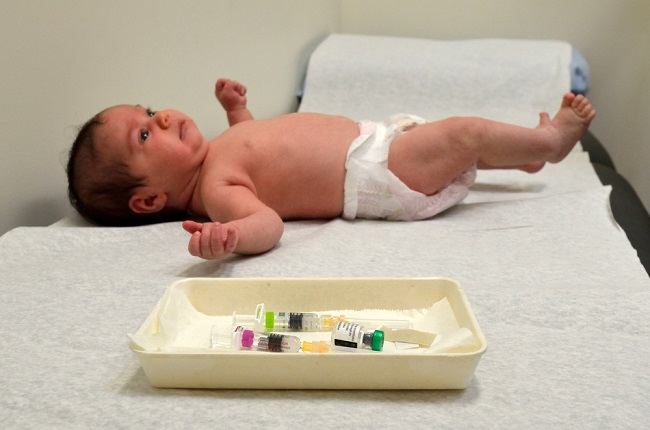Amniotic fluid embolism is a condition when amniotic fluid enters and mixes into the mother's circulatory system. Conditions that can occur during or after delivery are generally difficult to prevent and pose a risk of dangerous complications for both mother and baby.
Amniotic fluid embolism is one of the rare complications of childbirth, but it is difficult to prevent and detect early. This condition usually occurs suddenly and the cause is unknown.

Risk factors for amniotic fluid embolism
Amniotic fluid embolism usually appears suddenly for no apparent reason. In fact, pregnant women who are in good health can suddenly develop amniotic fluid embolism during childbirth. However, this condition is very rare.
Although the exact cause is not known, there are several factors that are thought to increase the risk of amniotic fluid embolism, including:
- Age of pregnant women over 35 years
- Placental disorders, e.g. torn placenta and placenta previa
- Preeclampsia
- Problems with the amniotic fluid, such as too much amniotic fluid (polyhydramnios)
- Method of delivery by cesarean section or forceps assistance
- Labor with the induction method to trigger the birth process
- Twin pregnancy
- Injuries to the abdomen or uterus
- Allergic reaction to amniotic fluid
Some Signs and Symptoms Amniotic fluid embolism
When amniotic fluid embolism occurs, pregnant women can experience a lack of oxygen (hypoxia), a drastic drop in blood pressure, and blood clotting disorders.
These conditions can cause the following symptoms:
- Shortness of breath or heavy breathing
- Nausea and vomiting
- A cold sweat
- Blue skin and lips (cyanosis)
- pounding chest
- Seizures
- Loss of consciousness or fainting
- Bleeding
While in the fetus, amniotic fluid embolism can cause fetal distress. If not treated immediately, this condition can endanger the life of the fetus.
Handling Amniotic fluid embolism
Although relatively rare, amniotic fluid embolism is a dangerous condition and needs to be treated immediately by a doctor. If they don't get treatment right away, mothers who experience amniotic fluid embolism are at risk for dangerous complications, such as brain damage, respiratory failure, shock, and cardiac arrest.
To treat the condition of amniotic fluid embolism, doctors can perform several treatment steps such as:
Oxygen therapy
Amniotic fluid embolism can cause blood flow to the mother and fetus to be blocked. This results in the mother and fetus being deprived of oxygen. Therefore, doctors will generally provide additional oxygen.
In addition to helping the mother breathe normally, oxygen therapy is also important to maintain the oxygen supply to vital organs, such as the lungs, heart, and brain, in order to function properly.
If there is respiratory or cardiac arrest due to amniotic fluid embolism, the doctor will perform cardiopulmonary resuscitation.
Blood transfusion
Amniotic fluid embolism can cause heavy bleeding that is difficult to stop during or after delivery. To replace the lost blood, doctors can give blood transfusions.
Drugs
Giving drugs aims to overcome the disorders that occur due to amniotic fluid embolism. For example, if amniotic fluid embolism causes heart problems in the mother, the doctor may prescribe medications to strengthen heart function.
Meanwhile, to deal with severe bleeding, the doctor can give drugs to stop the bleeding. In certain cases, the doctor may also give corticosteroid drugs to treat amniotic fluid embolism.
Amniotic fluid embolism is an emergency condition during labor or pregnancy. Mothers who experience amniotic fluid embolism generally require intensive care and close monitoring in the ICU.
Babies born to mothers with amniotic fluid embolism also usually need to be monitored in the NICU, especially if their condition is considered unstable.
So that the risk of amniotic fluid embolism can be detected early and anticipated, pregnant women need to routinely carry out pregnancy checks to the obstetrician or midwife.
To reduce the risk of amniotic fluid embolism, pregnant women also need to undergo delivery in an adequate health care facility, such as a hospital or maternity clinic.









